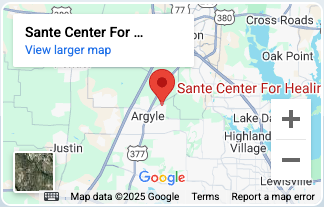Drug addiction is a mental disorder that never goes away. People can learn to manage it, but they can never cure it. Since addiction doesn’t go away, learning about relapse prevention is important. In fact, many addiction rehab centers focus on preventing relapse to reduce the risks of overdose and death.
Additionally, relapse doesn’t just affect individuals struggling with alcohol or other drug abuse. It can also be a problem for people struggling with trauma, problematic sexual behaviors, eating disorders, or other co-occurring mental illnesses. For this reason, a focus on relapse prevention is crucial for keeping clients safe in their long-term recovery journey.

WHAT IS RELAPSE PREVENTION?
Relapse prevention focuses on life after rehab. To prevent relapse, people have to identify triggers and cognitive behaviors that may cause it. Identifying triggers makes it easier for people to avoid situations that might lead to drug use.
For example, stressful situations can trigger a relapse. When you know that stress makes you want to use, you take proactive measures to lower stress. However, it’s not just emotions and feelings that cause a relapse. Sometimes, hanging out with certain people or visiting specific places can spur relapse.
Programs that teach people how to prevent relapse take both short and long-term sobriety into account. Learning preventative measures can help people avoid problem behavior. Preventing relapsing is a part of living in recovery.
STAGES OF RELAPSE
Relapse doesn’t usually happen all of a sudden. People often struggle with the thought of using again long before they actually do. Overall, there are three stages of relapse.
Emotional Relapse— During the emotional relapse stage, people don’t necessarily think about using. However, their actions and feelings subconsciously increase the potential for relapse. If they don’t have relapse prevention training, they can easily miss signs such as mood swings, isolation, and defensiveness.
The symptoms of emotional relapse are very similar to post-acute withdrawal. Understanding this condition makes it easier to identify the onset of emotional relapse. Failure to identify emotional relapse makes the phases progress quickly.
Mental Relapse— The next stage is mental relapse. During this stage, people think about using drugs or engaging in other problematic behavior. Mental relapse feels like a war inside the individual’s mind. Part of them wants to use, but the other doesn’t.
Even if people lean toward not using alcohol and other drugs, they still think about using. Simply thinking about it puts them in danger of relapse. Some signs of mental relapse include:
- Hanging out with old friends who use drugs
- Thinking or fantasizing about using drugs
- Glamorizing past usage habits
- Lying to loved ones and friends
Physical Relapse— The most dangerous phase is physical relapse. It doesn’t typically take people long to get to this stage if they have already experienced an emotional relapse and a mental relapse. Actions in this phase are driving to the liquor store, contacting a dealer, harming oneself, etc.
Once an individual physically starts to use alcohol and drugs again and need detox and rehab again, to recover.
During a physical relapse, people usually feel bad about the choices they make. They can enter a deep depression because they feel like they let their families and friends down. The key is to remember that relapse is often part of the recovery journey. Giving in to depression can make the relapse worse.
Instead, they need to get back into treatment identifying what they potentially missed before. They have to focus on relapse prevention to prevent the same outcome.

TECHNIQUES FOR AVOIDING RELAPSE
Once people reach physical relapse, the next best step is residential treatment again.
What are the techniques used to prevent a relapse? Using these techniques can mean the difference between staying sober and relapse.
Wait 30 Minutes— People need to give themselves 30 minutes before they use alcohol and drugs again. While this may seem like an odd technique, 30 minutes makes a huge difference. Most substance cravings last about 15 to 20 minutes. If they can get over that hump, they’re less likely to use.
Take Recovery One Day at a Time— Don’t think about staying clean forever. People often feel overwhelmed when they think about staying clean forever. Instead, they should think about staying clean for a day.
They can tell themselves, “I’m not going to use today.” Then they can take their sobriety one day at a time.
Reach Out for Support – Tell someone you trust, who supports your recovery that you’re having urges to use. Share that you are going through and what you are thinking. Sometimes talking about it can make the stressors seem more manageable. Remind yourself that you are not alone.
Relax and Stay Calm— Staying calm and focusing on relaxation is just as important as not using drugs. Most people admit to relapsing when they feel stressed out. Focus on learning calming techniques that can reduce stress.
A common reminder in the 12 step community is HALT to prevent relapse; don’t get too Hungry, Angry, Lonely or Tired.
LEARN HOW TO OVERCOME ADDICTION AT SANTÉ CENTER FOR HEALING
At Santé Center for Healing, we offer several substance abuse treatment programs alongside treatment for problematic sexual behavior, co-occurring disordered eating, and trauma resolution. We teach our clients about relapse prevention and how to detect triggers.
Relapse prevention is a part of all levels of care in Santé’s recovery continuum of care:
- Professional Assessments
- Medical detox
- Residential treatment
- Intensive outpatient treatment
- Transitional Living
- Family Programming
- Individual Therapy & Med Management
- Intensive Workshops
- Monitoring

“I am actually a contractor that Sante has hired for multiple services. I can’t speak from a patron/patient stand point, but as an individual with great observation, it is my understanding this is definitely the right home away from home. The staff is always very friendly, and accommodating for myself, and my crews. They have very strict rules, and guidelines that even we had to follow, which for a facility of this caliber, seems very necessary. They also take great care of the facility, and search for improvements constantly. I personally upgraded some of the railing to keep them in code. We also upgraded, and repaired all of the decks, and pathways they have throughout the property. Just feels like a great environment to grow, and heal. Highly recommended!” – Justin Vess
Relapse Prevention Plan
Aftercare is an important part of any treatment program. Before someone leaves rehab, they create a relapse prevention plan. This plan includes relapse prevention techniques to help clients deal with triggers and stay sober. Through advanced planning, individuals can prevent a relapse from happening.
Don’t live with the threat of addiction hanging over your head. Learn how to overcome your addiction and keep it from coming back. Reach out to Santé Center for Healing at 866.238.3154. We’ll guide you through recovery with a gentle hand.
What Does a Relapse Prevention Plan Involve?
Addiction specialists can adjust the relapse prevention model based on different substance abuse problems and individual characteristics. Part of a relapse prevention plan includes the client scheduling future appointments with psychiatrists, therapists, and other professionals involved in ongoing care and support.
Many of Santé Center for Healing residential clients choose to engage in a structured sober living program.
The entire point of the relapse prevention model is to help clients through all stages of relapse prevention. It incorporates both the context in which a relapse could take place and an associated set of cognitive and behavioral strategies to altogether prevent or limit a relapse.
One of the key components is identifying the factors, variables or situations that could precipitate, influence, or contribute to a relapse. Clients realize which environments and situational characteristics are high-risk for personal relapse.
Once they’re identified, the primary therapist and client work together to draft responses in these situations and how to avoid high-risk situations altogether.
In the relapse prevention model, the individual has to commit to their recovery. If they are not willing to do whatever it takes to stay clean, sobriety is not possible. One of the best relapse prevention techniques is to learn how to spot potential triggers and cravings.
Each person has unique triggers that make them want to use again. These triggers may be certain locations where the individual drank at or certain people they used drugs with. Learning how to avoid triggers and handle cravings is important in the relapse prevention model. Relapse prevention techniques may include options like avoidance, managing emotional distress, and dealing with intrusive thoughts.
As part of our mission to provide long-term recovery, including relapse prevention, Santé provides clients with a life-long along alumni program for support, including but not limited to: annual alumni retreats, educational opportunities, spiritual experiences, social adventures, service options, connections, and alumni-based recovery meetings.
Choosing a Healthier Lifestyle
Detox and rehab are just a part of the treatment process. From using mindfulness-based relapse prevention to education about the stages of relapse, there are many things an addiction treatment center can do to help clients stay sober. A top treatment center will help individuals achieve sobriety, experience what life in recovery is like, and create a relapse prevention plan for sustained recovery.
Does Mindfulness-Based Relapse Prevention Help?
There are many relapse prevention techniques people can use. Some of the techniques work best for intervening in the early stages of relapse. Other relapse prevention techniques are more useful as someone prepares to discharge from residential treatment. In Santé Center for Healing’s holistic therapy program in Argyle, TX, individuals can find options like mindfulness-based relapse prevention, 12 step programs, alumni programming, nutrition support, and more.
Mindfulness-based relapse prevention focuses on training the mind to be present in the moment. Instead of focusing on stress or future worries, the individual learns how to live in the present and accept their thoughts. The goal of mindfulness-based relapse prevention is never to ignore thoughts and feelings. Instead, the individual should accept the thoughts that appear and let them float away naturally.
Other than mindfulness, a quality addiction treatment center like Santé Center for Healing will offer additional support during the stages of relapse. An aftercare program may be a part of the individual’s relapse prevention plan. As a part of the relapse prevention model of care, the individual may also take part in an intensive outpatient program, sober living, and individual therapy and medication management.
Sante Center for Healing’s relapse prevention planning and alumni programming provides clients with a healthy way to spend their time instead of using alcohol or other drugs or acting out with other problematic behaviors. Call 866.238.3154 to learn more.
An addiction can completely change your life and make it impossible to enjoy your favorite activities. If you are suffering from the mental, physical, emotional, and financial effects of an addiction, you do not have to live that way forever. With the help of the Santé Center for Healing and a relapse prevention plan, you can take the next step in discovering a healthier lifestyle.


